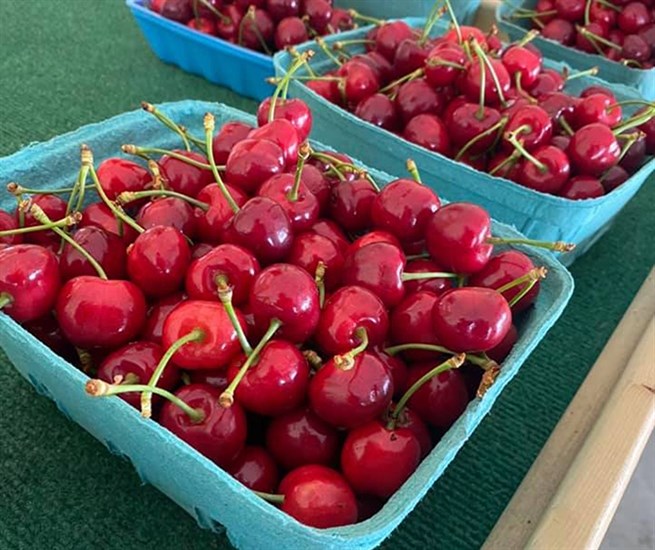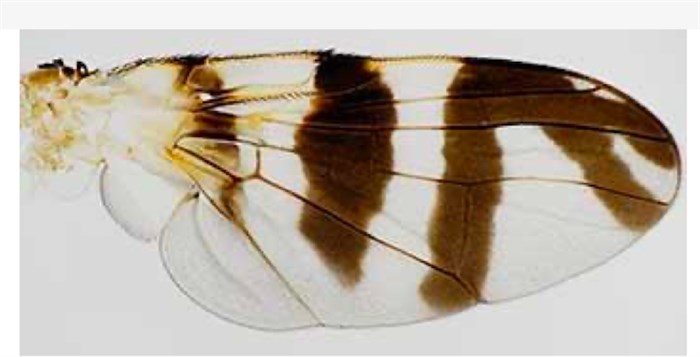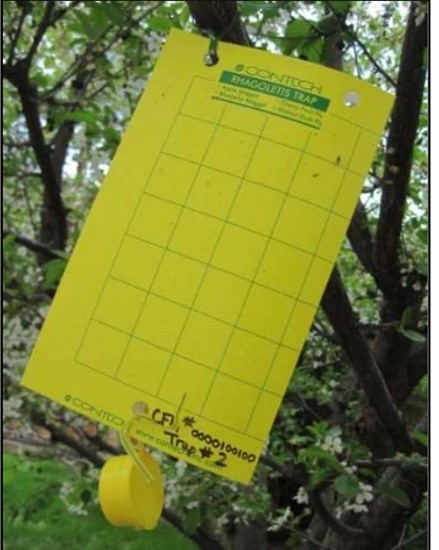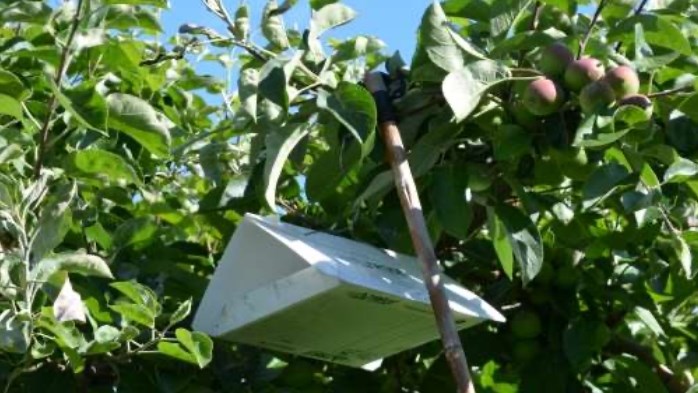
Image Credit: Facebook / Kailay Fruit Market
February 24, 2021 - 7:30 AM
When Beth Cavers grew up in the Okanagan, cherries ripened in late June or early July.
That was also the peak time for cherry fruit flies to infest them as much as they could.
These days, cherries are being harvested up until late August or even early September and shipped by freighter to coincide with the Autumn Moon Festival in China – with no sign of those pesky fruit flies.
“The cherry fruit flies are peaking in the first two weeks of July and they just tail right off after that,” Cavers, the general manager of the B.C. Cherry Association, told iNFOnews.ca. “You have growers who are picking beautiful ripe fruit in the first couple of weeks in August and there’s not a cherry fruit fly in sight.”

Okanagan cherry growers not only have to set traps to see if he Western Cherry Fruit Fly is getting to their orchards before they export to China but also have to be able to identify their wing patterns that are similar to other, less problematic, fruit flies.
Image Credit: Submitted/Agriculture & Agri-Food Canada, Pacific Agri-Food Research Centre, Summerland.
The Lapin cherry was developed at the Summerland research station about 30 years ago and was considered marvelous because it ripened later in the season. But now, it’s considered a mid-season variety.
That’s due, in part, to new varieties being developed in Summerland to ripen later but also because growers are planting further north and higher up hillside. That slows the ripening but also carries the risk of an early frost in September.
It’s not just a single pest that changed the way the cherry industry has evolved.
Another factor is that B.C. cherries are still being harvested after those in more southerly climates, like the U.S., are finished.
That’s allowing Okanagan growers to market to the Autumn Moon Festival celebrated in September in China and other Asian countries.
The Travel China Guide describes it as the second grandest Chinese festival, next to Chinese New Years.
“The later we can get our cherries into the market in good condition, the better the price is for them,” Cavers said. “So, if you can take cherries, keep them really well refrigerated and consistently refrigerated over a 21-day ocean voyage, you can get those into the market and you can get top dollar for them.”

This kind of sticky trap is used to check orchards for Western Cherry Fruit Flies. The yellow colour and odors are used to attract the flies.
Image Credit: Submitted/B.C. Cherry Association
The key to selling cherries – whether it’s at the local food market or on a slow boat to China – is temperature.
Cherry pickers start early in the morning to avoid the heat of the day. The fruit is packed in bins with reflective tarps on top to keep them cool.
They’re trucked to the packing plants and dumped into very cold water, packed into containers and put into cold storage – below 4C but above freezing, Cavers explained.
Cold storage is expensive and there is limited space so the crop needs to be moved out quickly to make room for the next day’s picking.
That’s why it makes sense to store them in a ship’s cold storage container as they cross the ocean. That’s cheaper than storing them in the Okanagan and paying the higher costs for air fare.
Cherries are shipped in refrigerated trucks to get them all the way to Ontario and Quebec for the domestic market or down into the United States. Or they can be flown on planes where the typical journey takes three days from the orchard to market.
Those markets, over the past decade, have been in about 40 countries on every continent and the fruit has sold for as much as $91 million in 2018. Exported cherries only brought in $72.2 million last year, in part because growers were getting such good prices domestically, they didn’t need to export as many.
That makes it simpler for growers who have to meet strict requirements before exporting to some countries.
China is concerned about the Western Cherry Fruit Fly getting into their country and, potentially, destroying their own cherry crops.
The European Union is worried about cherry fruit worms while Japan doesn’t want codling moths to get into their country.

These traps are used for coddling moths. Fortunately, most of those caught are sterile.
Image Credit: Submitted/B.C. Cherry Association
In the past, cherries were sprayed in the packing plants with a highly toxic methyl bromide gas before they were exported. That is now banned in Canada.
Another alternative, which is required by India, is to put them in cold storage for 10 days but that’s expensive and space is limited.
So, growers wanting to export to China, Japan or the European Union have reached agreements where traps are placed in their orchards and monitored for the pests.
There are two different types of traps with four to 20 in each orchard, depending on the size of the operation.
Traps have to be checked once or twice a week and the program is overseen by the cherry association to make sure it’s done right.
As few as two fruit flies per trap per week means the grower has to spray to control them or be banned from that particular market for the season.
Most of the other countries on the overseas list don’t require such testing because they don’t have domestic cherry crops they need to protect.
The Okanagan has the advantage of having cold winters so many pests don’t survive and hot dry summers minimizes fungal growth.
When it comes to the codling moths that Japan is worried about, many of those found in traps are sterile moths released as part of the sterile insect release program to protect crops.
The U.S. is, by far, B.C.’s biggest export market, buying $39 million of the total $72.2 million export crop last year.
China came second at $16.6 million. Number three on the list, Thailand, was far behind at just over $3 million.
The value of cherries shipped each year can vary significantly by country and total volume.
Last year, France took the smallest shipment at $842.
Cavers could not talk about the prices of cherries or even the total value of the Okanagan cherry crop.
“Shippers are not keen to discuss that,” she said. “Even when I ask directly they hedge and don’t answer. I’ve learned not to ask.”
She can’t even say how much of the crop is exported since growers don’t always want to share that information. She estimates it somewhere around the 50 per cent range.
To contact a reporter for this story, email Rob Munro or call 250-808-0143 or email the editor. You can also submit photos, videos or news tips to the newsroom and be entered to win a monthly prize draw.
We welcome your comments and opinions on our stories but play nice. We won't censor or delete comments unless they contain off-topic statements or links, unnecessary vulgarity, false facts, spam or obviously fake profiles. If you have any concerns about what you see in comments, email the editor in the link above.
News from © iNFOnews, 2021